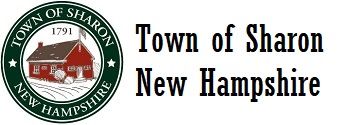Keene Sentinel – Story and Photos by Eric Poor – Sep 29, 2022

Two of the five properties recently named to the state’s Register of Historic Places are cemeteries in Sharon, both the South and North Burying Grounds.
The older of the two is the South Burying Ground on Jarmany Hill Road, where the oldest grave, containing the remains of Josiah Robbins, is dated 1795. According to the state’s Register of Historic Places, this cemetery enclosed by stone walls on all four sides, holds the graves of many of the town’s earliest settlers. The most recent interment is that of Edith Wilson, who died January 19, 1982.
Accessed through a white wooden gate, the cemetery has 153 gravestones, according to the town, which records 165 bodies. Ten stones record more than one person. One has five. There are 82 males and 83 females. Forty of them are children (under the age of twenty). Four are identified as military veterans who served in the Revolutionary and Civil Wars and two as doctors
All the stones are slate or rough marble, except one of polished granite that appears to be a replacement for an older stone. The burials were done with the heads situated to the west, facing east. Many of the stones bear carvings of winged soul effigies, willows and urns, common in the late 18th and early 19th centuries.
There are an additional twenty-five to thirty unmarked fieldstones placed throughout. They could mark graves or sites reserved for future interments. One whole corner of the graveyard is apparently empty of graves although some depressions are visible. The only planting is a large forsythia on the north side. Wild blueberries carpet much of the ground.
The South Burying Ground is a short uphill gravel road walk from Jarmany Road.
“Every time I walk that incline, I can imagine the procession of horses and oxen, wagons and carts and people on foot to lay their loved ones to rest,” Gina Goff of Sharon said. Goff worked to have the cemeteries placed on the register.
“What makes both of these cemeteries so special is that they’re a memorial to the men, women and children who lived here so long ago when life was so challenging,” Goff said. “It represents their lives and beliefs and that is important to present day Sharon, New Hampshire.”
It was because the cemeteries seemed so special, that Goff applied to have them listed on the state’s historical register.
“I was hopeful the state would agree they’re special,” she said. “We made the cut, which is great.”
It wasn’t her doing alone, Goff said.
“Other people in town hold both cemeteries in high regard and have done the research. I stood on their shoulders when I applied to the state. It was a collaborative effort.”
Sharon’s North Burying Ground was established in 1834, according to the registry. Located on McCoy Road and also known as the Sharon Village Cemetery, it holds 79 known burials, the most recent dated 1927. Originally known as the “New” Cemetery, it has the town’s only receiving vault. A cut granite wall extends along the roadside and the other walls are piled fieldstone. Most of the markers are slate and marble. There are five slate monuments ranging from four to seven feet tall.
Those cut granite stones along the roadside are topped with iron rings Goff suspects were used to tether the horses people rode to the interments.
The older North Burying Ground is directly adjacent to the town’s current cemetery.
While the historic recognition is important, Goff hopes visitors will be respectful.
“The headstones are delicate and we discourage rubbings to avoid damage to them.”
“From a historian’s perspective, all cemeteries are important historic resources,” said Benjamin Wilson, Director of the Division of Historical Resources. “Each grave marker tells a story and helps make up the larger story of who we are as a state. In the case of these two listed cemeteries, they both clearly represent the periods from when they were in use. From the plot layout, the types of marker materials, to the carved iconography exhibited on the stones, researchers can define social norms, fashions of the period and economic variables. Cemeteries represent an important type of above ground archaeology that gives us a clear view of the past.”
New Hampshire’s Division of Historical Resources, the State Historic Preservation Office, was established in 1974 and is part of the NH Department of Natural and Cultural Resources. Its mission is to preserve and celebrate New Hampshire’s irreplaceable historic resources through programs and services that provide education, stewardship and protection. They can be found on-line at www.nh.gov/nhdhr.
